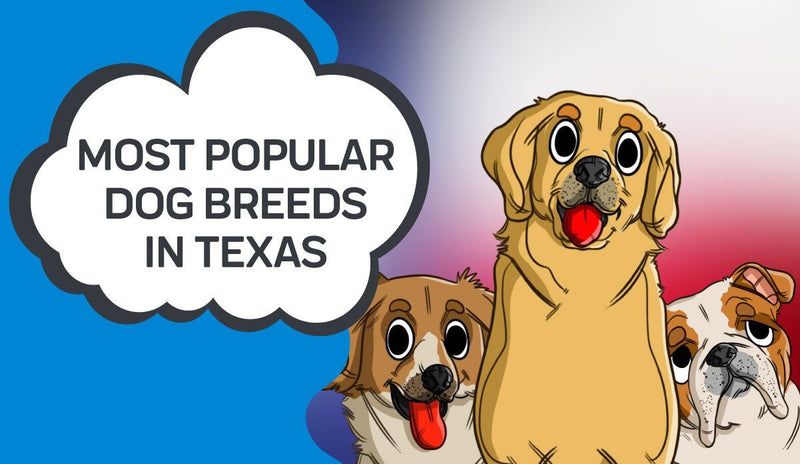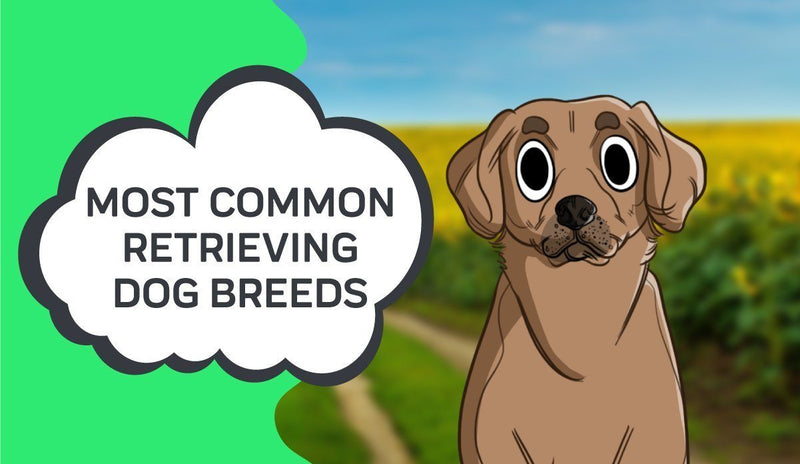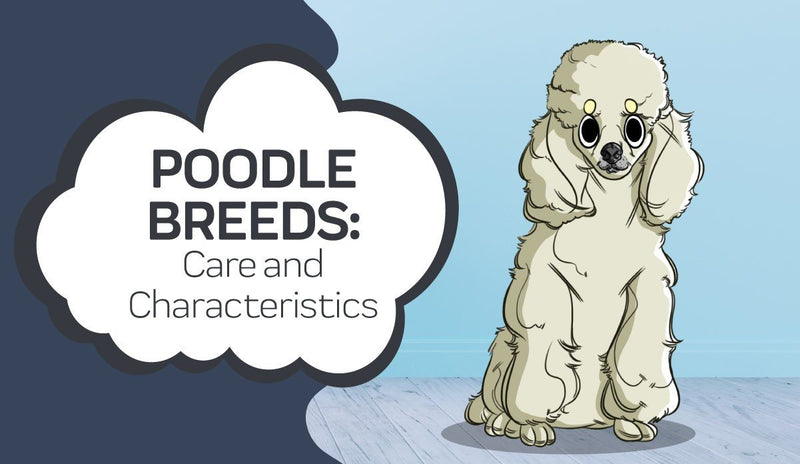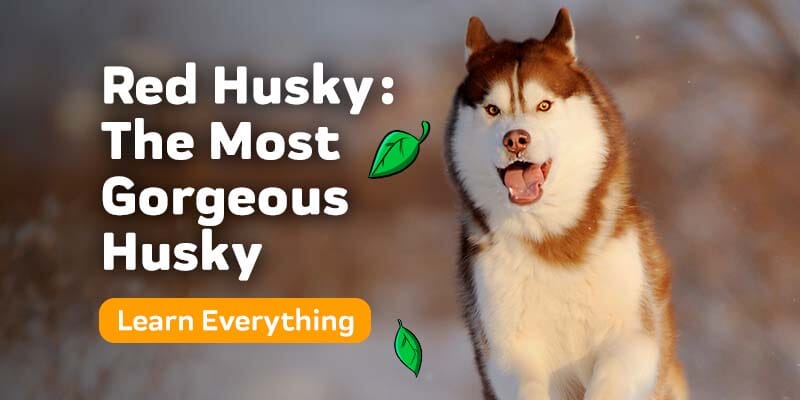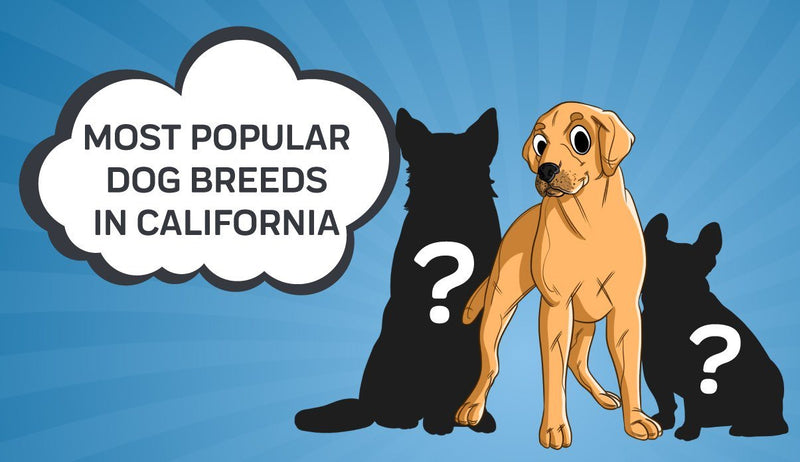When asked to name a type of dog that comes from Japan, most people answer the Shiba Inu or Akita. However, those are only 2 of 13 unique Japenese dog breeds around today that come from the country known for their arts, cuisine, and architecture.
Dogs that originate from Japan are known as some of the most out-going, smart, snazzy, and well-behaved dogs around, and today we are talking all about them.
In this article, you’ll meet the Japanese Husky, known for their big coat and rarity. We’ll give you the lowdown on the Shiba Inu whose recent internet popularity is making them a dog on everyone’s want list.
When you’re looking for a new dog, you’ll definitely want to research dogs that come from Japan, so how about we do that now!
A Word On Japanese Dog Terminology
In a moment, you’re about to see a lot of dogs with term “Inu” and “Ken” in their names like the Shiba Inu or the Kai Ken.
However, this doesn’t mean that all dog breeds with “Inu” or “Ken” are similar or share a bloodline. Both Inu and Ken mean dog in Japan.
Another term you’ll commonly come across in our article is Foundation Stock Service (FSS).
If you see a dog breed with this term, it means that while they are not an officially recognized breed by the AKC due to their rarity, the breed is considered the foundation of an unofficial/unique breed.
The Akita 秋田犬
|
Other Names: |
Great Japanese Dog |
|
Temperament: |
Brave, Loyal, Friendly, and Independent |
|
Coat: |
Soft, Thick, and Medium |
|
Color: |
Red, Orange, Brindle, and White |
|
Weight: |
80-120 pounds (male), 50-90 pounds (female) |
|
Height: |
24-26 inches (male), 22-24 inches (female) |
|
Lifespan: |
10-13 years |
|
Category: |
Working Group |
Let’s start our list off with one of the most well-known dogs both inside and outside Japan, the Akita. The Akita is so popular that they are Japan’s national symbol and sometimes referred to as the Great Japanese Dog.
There are two variations of the Akita, though depending on the country you’ll find backlash to this statement. The United States and Canada consider the “American Akita” an alternative version to the “Japanese Akita Inu”.
However, outside of those countries, you’re more likely to find that most people consider them two different breeds.
The American Akita and Japanese Akita do look quite a bit different after all.
Temperament and Other Facts
Akitas are dogs with big personalities, and this results in both good and bad things.
First, let’s talk about the good. Akita Inus are wonderful guard dogs and are cautious around strangers without becoming aggressive.
However, they can become aggressive with other dogs, and two males in a room together isn’t always a good idea.
Back to the good, the Akita does well with children, though they do like their independence from time-to-time.
They are incredibly easy to train when they aren’t feeling an independent streak, but with regular training, that behavior can be corrected.
The Akita is such a good learner and disciplined dog that law enforcement in many different countries use them as police dogs.
The Hokkaido Dog 北海道犬
|
Other Names: |
Ainu dog, Ainu-ken, Do-ken, Seta |
|
Temperament: |
Intelligent, Brave, Loyal, & Docile |
|
Coat: |
Double Coat, |
|
Color: |
Red, White, Brindle, Black, Gray, Black, and Tan |
|
Weight: |
45-66 lbs |
|
Height: |
Females: 18-19 in Males: 19-21 in |
|
Lifespan: |
11-13 years |
|
Category: |
Working, Hunting, Spitz |
The Hokkaido sits comfortably between the appearance of an Akita and the Shiba. They are smaller than the Akita, but larger than the Shiba, and like them, Hokkaido has a thick, fluffy, and soft coat.
However, the Hokkaido takes that up a notch by having a double coat which most other Japanese breeds don’t have.
That thick coat makes them great at staying warm during the Hokkaido region’s winter, which is the most northern island in the country. Speaking of Japan’s history, some believe the Hokkaido is the oldest living Japanese dog breed.
Some historians think they evolved from the existent hunting dog, the Matagi-ken, sometime around 3,000 years ago.
Temperament and Other Facts
The Hokkaido makes for one faithful hunting companion with a personality that’s similar to the Shiba Inu and Kai Ken. Their natural hunting ability gives them a great sense of smell and a whole lot of confidence.
However, when at home they are docile and obedient making them great with kids. You will want to train them to be around kids and small animals when they are puppies to break natural hunting instincts.
Fortunately, the Hokkaido dog is an intelligent breed, and this along with their love of food makes them easy to train.
Tosa Inu 土佐
|
Other Names: |
Japanese Mastiff, Tosa Ken,Tosa Tōken, and Japanese Fighting Dog |
|
Temperament: |
Alert, Fearless, Patient, and Sensitive |
|
Coat: |
Very short and Sleek |
|
Color: |
Tan, Black, Fawn, and White |
|
Weight: |
100-200 Pounds |
|
Height: |
21.5-23.5 inches (minimum) |
|
Lifespan: |
10-12 years |
|
Category: |
Foundation Stock Service, Working, Watchdog |
The biggest dog on our list by far, meet the Tosa Inu, also called the Japanese Mastiff as they closely resemble the Bull Mastiff.
The Tosa Inu is a complex mixture of dog breeds, occurring sometime in the 19th century after people started breeding the Japanese Shikoku Inu with European dogs like the Mastiff, Bulldog, St. Bernard, German Pointer, Bull Terrier, and Great Dane.
What you get is a dog that varies between 100-200 lbs and can stand taller than an adult human. Tosa Inus’ in Japan tend to fall on the lower side of the size scale with the American variety almost doubling their size.
The Tosa Inu has gotten a rap as a fighting dog. Several countries have banned them or require permission to own, and this includes some regions of Japan. However, with the advancement of dogfighting laws, today you are much more likely to find the Tosa Inu working as a guard dog.
Temperament and Other Facts
Because of their large size and strong protective nature, Tosa Inus are not great dogs for first-time owners. They need a lot of training, especially when it comes to them being around other dogs and animals.
They are very trainable, however, due to their sensitive nature that really binds them to their owners. Some people call the Tosa Inu the peaceful war dog.
Shiba Inu 柴犬
|
Other Names: |
Japanese Brushwood Dog, Japanese Turf Dog, and Shiba Ken |
|
Temperament: |
Alert, Active, Attentive |
|
Coat: |
Short, Fluffy, and Soft |
|
Color: |
Red, Orange, White |
|
Weight: |
23 pounds (male), 17 pounds (female) |
|
Height: |
14.5-16.5 inches (male), 13.5-15.5 inches (female) |
|
Lifespan: |
13-16 Years |
|
Category: |
Non-Sporting Group |
Along with the Akita, The Shiba Inu is easily the most recognized Japanese dog around the world.
The Shiba’s small size and spirited springy nature defines this breed, separating them from similar-looking breeds like the Hokkaido Inu and Akita.
Shiba’s are known for their rich and robust orange, red, and white coat. While tiny, the Shiba is a sturdy and muscular dog which makes them great at hunting.
Shiba’s make great dogs for both country and city living and go well with both large families and those that ride solo.
Temperament and Other Facts
Shiba’s are confident, so much so that they can get a good bit defiant, so we really recommend obedience training when they are young. If left untrained, they can get too rowdy around children and small dogs.
Besides that these dogs don’t take a lot of work. They are bursting at the steam with a personality that will surely leave you with memories of their antics.
Ryukyu Inu 琉球犬
|
Other Names: |
Okinawa Native Dog, Tora Inu |
|
Temperament: |
Intelligent, Alert, and Quiet. |
|
Coat: |
Soft, Short, and Sometimes Long |
|
Color: |
Red Brindle, Black Brindle, White Brindle, Black, White, Sesame, Ivory, and Red. |
|
Weight: |
40-80 pounds |
|
Height: |
18 - 19 inches (male) and 16-18 inches (female) |
|
Lifespan: |
12-13 years |
|
Category: |
Working and Hunting |
|
Originated In: |
We’ve covered the two most well-known dog breeds from Japan, so how about we talk about one few people have heard of.
Originating from Okinawa, the Ryukyu Ken is a medium-sized dog whose numbers are quickly declining. In fact, we once thought they went extinct right after WWII.
Today, there are approximately 400 Ryukyus left in the world as of 2015, though they are great efforts to save this incredible breed that is often used as therapy dogs.
Temperament and Other Facts
The Ryukyu is not a big barker and mostly enjoys relaxing around. They are extremely confident dogs and difficult to intimidate. This makes them great at hunting wild boars which they’ve done for over 100 years.
This also means they aren’t the best with small children and animals, but with training they can be perfectly fine around both.
Kai Ken 甲斐犬
|
Other Names: |
Tora Inu, Tiger Dog |
|
Temperament: |
Loyal, Agile, and Keen |
|
Coat: |
Fairly Short and Corse |
|
Color: |
Brindle, Black Brindle, and Red Brindle |
|
Weight: |
20-40 pounds |
|
Height: |
15.5-19.5 inches |
|
Lifespan: |
12-15 years |
|
Category: |
Foundation Stock Service |
Continuing on our path of rare dogs, up next we have the Kai Ken which belongs to one of the six indigenous dog breeds in Japan. This makes it a national treasure in its homeland of the Kai province in Yamanashi Prefecture.
They look similar to the Ryukyu and likewise are equally great hunters. However, they are not related.
The Kai Ken’s biggest feature is their distinctive brindle coat that comes in three colors: brindle, black-brindle, and red-brindle. Funny enough, most puppies are born with a pure black coat that turns brindle for up to the first five years of the dog’s life.
Temperament and Other Facts
Fast and agile, the Kai Ken is an intelligent dog that loves running and hunting. They are determined and will chase prey through water even if that means swimming in a river with strong currents.
This all means the Kai Ken prefers living in the country where they have room to run out all their energy. So they might not be the best dog for city living.
Kishu Ken 紀州犬
|
Other Names: |
|
|
Temperament: |
Faithful, Noble, Docile |
|
Coat: |
Short and Smooth |
|
Color: |
White |
|
Weight: |
30-60 pounds |
|
Height: |
17-22 inches |
|
Lifespan: |
11-13 years |
|
Category: |
Foundation Stock Service |
The Kishu Ken is a classic dog to represent the Japanese dog breeds. In fact, they are one of the original six breeds. Like many of the other breeds on this list, they were bred for hunting.
However, unlike the vocal English and American hunting dogs Japanese hunting dogs are known to quietly stalk their prey.
They also differentiate themselves from American and English hounds with their pointed up ears and curled back tail similar to the Siberian Husky.
How far back these dogs go is unknown as much of their history has been lost. Some historians speculate the may have first appeared around 3,000 years ago.
Temperament and Other Facts
The Kishu is one of the quietest dogs around and can easily sneak up on you without you noticing. Fortunately, they are wonderfully loyal, and unlike some of the other hunting breeds on our list, the Kishu is great with kids.
Plus, as long as you socialize them with cats and small dogs at an early age, they fit well with everyone.
Training is recommended, as they can be quite determined and like to be the boss of the house, so this should be nipped in the bud fast.
The Kishu also makes a fantastic guard dog due to their observational skills, and even though they rarely bark, they’ll still let you know if anything is running afoul.
Sakhalin Husky 樺太犬
|
Other Names: |
Karafuto Ken |
|
Temperament: |
Intelligent, Devoted, Alert, and Patient |
|
Coat: |
Thick, Dense, and Soft |
|
Color: |
Black, russet, biscuit, cream |
|
Weight: |
66-88 pounds |
|
Height: |
22-26 inches |
|
Lifespan: |
12-14 years |
|
Category: |
Working group and Sled Dog |
Meet Japan’s rarest living dog, the Sakhalin Husky who is unfortunately near extinction after the last known breeder of these majestic dogs died in 2012. Before his passing, Sergey Lyubykh commented that the Sakhalin Husky no long has a population size to support genetic diversity.
As of 2015, there were only seven known alive, though more could still be wondering the island of Sakhalin.
The Sakhalin Husky, also known as the Karafuto Ken, was once popular as a sled dog due to their great size and mammoth coat.
Temperament and Other Facts
Temperament is hard to determine due to this breeds lack of numbers, however, Sakhalin Huskies are said to have a similar personality to the Siberian Husky. They’re extremely loyal, but can often be a stubborn butt due to their high intelligence that makes them prone to boredom.
The Japanese Spitz 日本スピッツ
|
Other Names: |
Nihon Supittsu |
|
Temperament: |
Loyal, Playful, Smart |
|
Coat: |
Long, Undercoat, and Soft |
|
Color: |
White |
|
Weight: |
11 to 20 pounds |
|
Height: |
10 to 16 inches |
|
Lifespan: |
10-16 years |
|
Category: |
Foundation Stock Service |
The Japanese Spitz is a small dog that looks like a mix between the white Pomeranian and American Eskimo dog and first emerged during the 1920s. Though it wouldn’t be until the end of WWII until they became an officially recognized breed.
Their popularity has grown over the years, and now every major international kennel club beside the AKC recognizes the Japanese Spitz. The reason the AKC doesn’t recognize the breed is due to their similar appearance to the American Eskimo dog.
Temperament and Other Facts
Unlike many of the other dogs on our list, the Spitz is not known for their hunting skills. As well, they bark occasionally, for example, when there is a visitor at the door.
The Spitz is a great dog for the family, whether that’s a younger family with small kids or an older one whose kids have set off on their own adventures. Loving, loyal, and friendly are the three best words to describe the Japanese Spitz.
Japanese Chin 狆
|
Other Names: |
Japanese Spaniel |
|
Temperament: |
Charming, Noble, Loving |
|
Coat: |
Long, Silky, Easy-To-Maintain |
|
Color: |
White and Black |
|
Weight: |
4-9 pounds |
|
Height: |
8-11 inches |
|
Lifespan: |
10-14 years |
|
Category: |
Toy |
Meet the Japanese Chin, often called the Japanese Spaniel, due to their close resemblance to spaniel breeds. The Japanese Chin is naturally crossed eye, though this does not hurt the breed in any way.
Unlike many of the other dogs on our list, the Japanese Chin is not native to Japan, but historians aren’t sure where they originated from. There are three superb guesses, however.
First, most people believe the Japanese Chin originated from China, which helps explains their name. One of the reasons for this is the breeds’ depiction in several art pieces and temples.
Another guess is they first came to Japan from Korea in the 6th century when gifted to the Empress at the time. Others think it wasn’t around 732 AD before the Chin came to Japan — again as gifts from Korean rulers.
Temperament and Other Facts
Like a lot of small dogs, the Chin has a much bigger personality than their size. They are a bit independent, but they can make great therapy dogs, and they love being the center of entertainment. In fact, at one time these dogs were bred to entertain Japanese nobleman with tricks like the “chin spin”.
However, despite a big personality and the bond they form with people — which can cause separation anxiety — due to their small size, the Chin can be shy and doesn’t always do well with young kids.
Alert, quirky, and out-going are the three best terms to describe this vivacious dog.
Shikoku Inu 四国犬
|
Other Names: |
Kochi-ken |
|
Temperament: |
Energetic, Alert, Enthusiastic |
|
Coat: |
Very Short, Mixture of Soft/Corse |
|
Color: |
Black & Tan, Black Sesame, Red, Red Resame, and Sesame |
|
Weight: |
35-55 pounds |
|
Height: |
17-22 inches |
|
Lifespan: |
10-12 years |
|
Category: |
Foundation Stock Service |
Meet the Shikoku Inu, one of the six original dogs Japanese breeds that are still around. They first originated from the southern island of Japan, Shikoku Island. When you remove their naturally dark black and brown coloring, you find a dog that closely resembles the Shina Inu.
They both share pointed up ears, a small size, short thick coat, and curled tailed.
Like most of the dogs on our list, the Shikoku was originally bred for hunting, making them fast, active, and brilliant smellers.
Shortly after WW1, the declining economy almost saw this breed go exist. Fortunately, this is a breed that knows how to survive. Today, there is a push to bring the Shikoku Inu into the mainstream’s eye.
Temperament and Other Facts
Despite their superior hunting skills or because of it, the Shikoku Inu is often said to be a less stubborn Shiba Inu. They are fast learners, and training is a breeze making them wonderful pets to have for an active family.
Japanese Terrier 日本テリア
|
Other Names: |
Nihon Teria, Nippon Terrier, Nihon Teria, Nihon Terrier |
|
Temperament: |
Active, Cheerful, and Affectionate |
|
Coat: |
Short and Sleek |
|
Color: |
Black & White, Tri-Color (Black, Brown, & White) |
|
Weight: |
5-9 pounds |
|
Height: |
8-13 inches |
|
Lifespan: |
12-15 years |
|
Category: |
Toy or Lap Dog |
The Japanese Terrier is thought to have emerged after Japanese breeders started mixing Fox terrier and Pointer with dogs indigenous to Japan. As such, they closely resemble the former breeds but don’t expect to see one in your life.
The Japanese Terrier is so rare it is only recognized by the Japanese Kennel Club and the United Kennel Club.
Their point of origin, as you can guess, is as such mysterious, with some believing the Dutch brought these dogs’ ancestors along with them on merchant ships to control the vermin population.
Temperament and Other Facts
The Japanese Terrier is said to be wonderful family dogs as they were bred to live on small ships with lots of people. They make fantastic lap dogs, and while they are good at hunting mice, don’t expect them to hunt anything much bigger than a mouse.
They have a very short coat that makes near hypoallergenic, but this also means they need a coat if they’re going to live in a colder climate.
Sanshu Inu
|
Other Names: |
N/A |
|
Temperament: |
Affectionate, Loyal, and Sweet-Natured |
|
Coat: |
White, tan, Red, Fawn, Gray and Pied. |
|
Color: |
White |
|
Weight: |
44-55 lbs. |
|
Height: |
16-20 in (female) 18-22 in(male) |
|
Lifespan: |
N/A |
|
Category: |
Not Recognized |
A cross between the Chinese Chow Chow, Aichi, and other Japanese dogs, the Shanshu Inu is a high-energy and affectionate dog rarely seen outside Japan. However, in Japan, they are considered rather popular and are commonly found as family dogs.
Though strangely they are not recognized by any kennel club even the Japan Kennel Club.
They sit in-between the Akita and Shiba size-wise, however, they often have an all-white coat and an appearance that resembles the Hokkaido Inu — though their tail is straight. As well, unlike Japanese dogs, the Sanshu coat comes in a wide variety of colors.
Temperament and Other Facts
Sanshu Inus quickly build a close bond to their owners, making them wonderful for families who want a dog that can babysit and guard their kids.
They are fast learners, like following commands, and are highly affectionate. They are intelligent, especially emotionally, so make sure to use positive reinforcement when training them.












